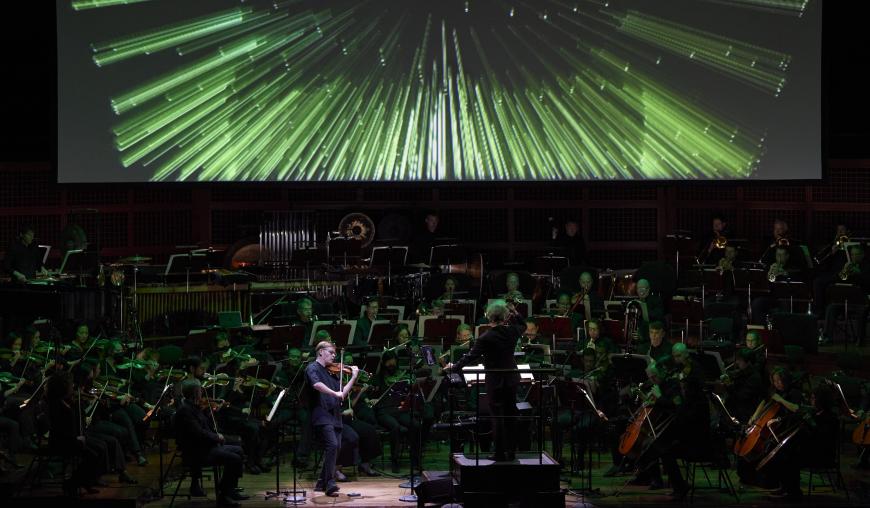
Two decades after its last performance at Davies Symphony Hall, John Adams’s Naïve and Sentimental Music returned to the San Francisco Symphony this past weekend, still as fresh as spring. The Friedrich Schiller essay from which Adams lifts his title refers to the duality of the self-conscious versus the natural in art. And impossible as it may be for any of us to return to a state of innocence, this beautifully frank symphony does come close.
A melody cruises, first in the flute, then paragliding across the orchestra. Depending on how you listen, the beat could be anywhere, but the mechanics don’t matter. We’re just floating along, hardly noticing the groove’s shifts until we’ve arrived. It’s like that characteristic final short note bringing us out of a syncopation (“so that’s how he does it”). The 45-minute work is utterly coherent. Hearing the piece once, you might not be able to sing it, exactly, but you could convincingly mimic its contours.
“Mother of the Man,” the second movement and emotional heart of the work, just might be that return to innocence. Above the veiled strings ring amplified guitar, bowed vibraphone, temple bells, and chimes. The wistful first strains already sound familiar. It’s as if the music is in the old antiphonal style, the bass lines both recalling an ancient cantus firmus and reaching ever onward.
But moments on Friday, particularly in the third movement, were unusually blurry for Music Director Esa-Pekka Salonen and the SF Symphony. This is a giant score, and its balance was occasionally off. We always needed more bass, sometimes more brass, even. The pulse, too, was surprisingly sedate — was that intentional? Adams’s work does seem personal for Salonen, who, with the Los Angeles Philharmonic, co-commissioned and premiered this piece in 1999. It’s with their critical recording, after all, that I’m comparing.
For this program, the safe pairing would’ve been with something everyone knows, like a Mozart concerto. Riskier but more fun, the concert’s other half was the premiere of Jesper Nordin’s violin concerto Convergence, with SF Symphony Collaborative Partner Pekka Kuusisto as the soloist.
Updates to established forms prompt the questions of how and why. Nordin uses real-time electronics, triggered by Salonen and Kuusisto, to make this SFS-commissioned concerto new. “No one knows what’s going to happen,” the composer said.
The older threads in Convergence are welcome, though. Overpressure and amplified scuttling, like so many mechanical insects, bring back the best bits of George Crumb’s string quartet Black Angels. In other places, a magnificent sprawl recalls Benjamin Britten. Tying it all together are Nordic folk idioms, traditional but novel to me. (The microtones have pretty designations of light or dark blue notes depending on how “out” they are.)

Nordin, born in 1971, has created various interactive “music engines” for video games and virtual performances. Though he conceived some of this music as far back as 2000, Convergence does have a Zoom aesthetic. Real-time playing dovetails into its augmentations, the lags creating joyful, unexpected distortions. On Friday, Kuusisto’s variegated tone shone throughout.
The first movement’s sound bath-y samples did seem superfluous, about as important as the marimba ringtone of the phone that kept going off in the hall. And instead of the electric-guitar samples controlled via gestures (like a theremin), why not have a real guitarist onstage? But when the orchestra came together, it was staggering, its relentless drones a postmodern twist on the thunderous tonic chords at the end of a classical piece. Old and new intertwined, Convergence is everything it promises to be.




